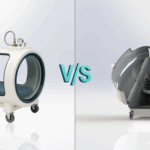 Researchers have found a new way to control the amount we eat: use a bigger fork.
Researchers have found a new way to control the amount we eat: use a bigger fork.
While numerous studies have focused on portion sizes and their influence on how much we eat, researchers Arul and Himanshu Mishra and Tamara Masters looked at how bite sizes affect quantities ingested.
To do this, they conducted field research in a popular Italian restaurant in the south-western United States.
The study
Two sets of forks were used to tinker with bite size: a larger fork that held 20% more food than the fork usually used in the restaurant, and a smaller fork that held 20% less than the usual utensil.
Over two lunches and two dinners in the restaurant, tables were either “large fork” or “small fork” tables.
Servers, including one of the study’s authors, took customers’ orders, and weighed the full plate of food that they had ordered before serving it to them.
A small sticky note was attached to the underside of each plate, noting the weight and other information – just in case the fork and plate were separated when the table was cleared.
At the end of the meal, the plate was brought back to the kitchen and weighed again, and the researchers found that diners who used the bigger fork ate less of their food than those who used the smaller one.
Theory only works in restaurant
But the big fork, less eaten theory only worked in a restaurant setting. A study conducted in the lab, which also used Italian food, found that people who used big forks actually consumed more.
The researchers, whose findings were published in the Journal of Consumer Research, concluded that there are different motivations when we eat in a restaurant or a lab.
Diners went to the restaurant with a “well-defined goal of satiating their hunger, and, because of this well-defined goal, they are willing to invest effort and resources to satisfy their hunger”.
In the lab, participants were told they were taking part in a study and did not have that same motivation.
Forks tool to achieve ‘goal’
The restaurant diners felt that the small fork gave them “a feeling that they are not making much progress” towards their goal, and this resulted in them eating more of the food on their plate than the large-fork group, the researchers reasoned.
“Grandma’s advice tells us to consume small bites, but remember, she also tells us to chew well, so that our body has enough time to let us know that we are full,” the researchers conclude.
“Given people’s busy lives and the growing trend of eating in restaurants, if we are not chewing longer, then consuming from a larger fork may actually be more helpful in controlling over-consumption,” they write.
– (AFP, July 2011)
________________________________________________________________________
Do you chew a mouthful of food between 20 and 30 times?
_________________________________________________________________________








2 comments
Join the conversationMaralynn - September 5, 2011
That’s more than sensible! That’s a great post!
12 eating-out tips for slimmers | Salvagente - November 17, 2011
[…] you’re trying to lose weight, you will know how difficult it can be to stick to your diet when surrounded by kilojoule-laden […]